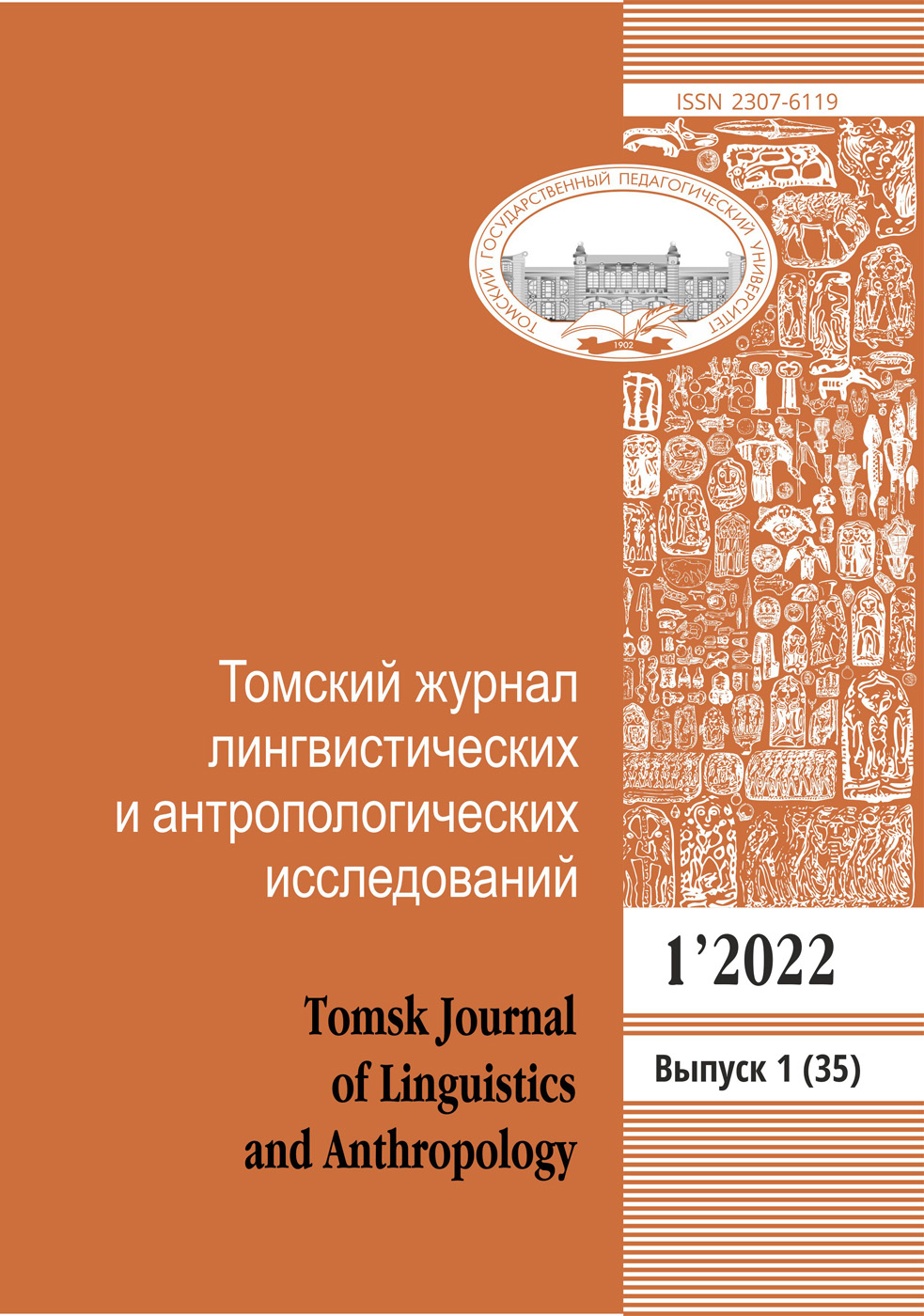LINGUISTICS. ACADEMIC DISCOURSE: TERMINOLOGICAL DISSONANCES
A distinctive feature of contemporary linguistic research is its engagement with language actualization processes. This point finds its foundation in F. de Saussure’s conception distinguishing language, speech and speech activity which has given rise to various new trends with the purpose of exposing and examining the sense generating mechanisms of language in work. Analytical perspectives comprise a diversity of problems including the psychology of perception, interpretation and assessment of various phenomena, conventions of societal structures and communication modi. This originates a new interdisciplinary problem-solving plane with a new subject termed “discourse”. The phenomenon complexity and, consequently, the multiplicity of qualification and classification criteria bring forth a discord in the term (as well as the phenomenon) interpretation. There springs up a necessity to define its (the term and the phenomenon) status, correlations with other objects of linguistic analysis, such as text, genre, register. All these points, as well as the problem of term coinage and usage are in the focus of the article.
Keywords: discourse, text, genre, style, register
References:
1. Leshchyak О.V. Теоriya diskursa – teorii diskursa – teorii diskursov: k voprosu o vozmozhnosti sozdaniya chastnykh lingvisticheskikh teorii [Theory of discourse – theories of discourse – theories of discourses: on the question of private linguistic theories development]. URL: http://dspace.nbuv.gov.ua/xmlui/bitstream/handle/123456789/55010/131-Leshchak.pdf?sequence=1 (accessed 18 December 2015) (in Russian).
2. Serio P. Kak chitayut teksty vo Frantsii [How texts are read in France]. Кvadratura smysla. Frantsyzskaya shkola analyza diskursa [Quadrature of Meaning: the French School of Discourse Analysis]. Moscow, 1999. Pp. 12–53 (in Russian).
3. Karasik V. I. Yazykovoy krug: lichnost’, kontsepty, diskurs [Language Circle: Person, Concepts, Discourse]. Volgograd, Peremena Publ., 2002. 478 p. (in Rusian).
4. Trunova О. V., Trunova N. V. Mnogomernost’ vremeni khudozhestvennogo diskursa [Multidimensionality of Time in the Fictional Discourse]. Materialy XI mezhdunarodnoy konferentsii “Yazyki i kul’tury v sovremennom mire [Proceedings of the international conference “Languages and cultures in the modern world”. Paris, June, 2–7, 2014]. Moscow, 2014. Pp. 306–310 (in Russian).
5. Silant’yev I. V. Tekst v sisteme diskursnykh vzaimodeystviy [Text in the system of discourse interactions]. Kritika i semiotika – Criticism and Semiotics, 2004, no. 7, pp. 98–123 (in Russian).
6. Usmanova А. R. Diskurs, diskursiya [Discourse, discoursing]. Entsiklopediya sotsiologii – Encyclopedia of Sociology (in Russian). URL: http://slovari.yandex.ru/art.xml?art=sociology/soc/soc0327.htm&encpage=sociology&mrkp=http%3A//hghltd.yandex.com/yandbtm%3Furl%3Dhttp%253A//encycl.yandex.ru/texts/sociology/soc/soc327.htm%26text%3D%25E4%25E8%25F1%25EA%25F3%25F0%25F1%26reqtext%3D%25E4%25E8%25F1%25EA%25F3%25F0%25F1%253A%253A1280168%26%26isu%3D2 (accessed: 20 January 2016).
7. Gal’perin I. R. O ponyatiyakh “stil’” i “stilistika” [About the notions “style” and “stylistics”]. Voprosy Yazykoznaniya – Issues of linguistics, 1973, no. 3, pp. 14–25 (in Russian).
8. Bakhtin М. М. Problema rechevykh zhanrov [The problem of speech genres]. Sobraniye sochineniy [Collected works]. Moscow, Russkiye slovari Publ., 1996. Vol. 5. Pp. 159–206 (in Russian).
9. Biber L. Conrad S. Register, Genre and Style. Cambridge University Press, 2009. 344 p.
10. Zolotova G. A. K voprosu o structure tekstov raznogo kommunikativnogo naznacheniya [On the structure of the texts with different communicative purposes]. Yazykovaya sistema i ego razvitiye vo vremeni i prostranstve [Language system and its development in time and space]. Moscow, MSU Publ., 2001. Pp. 322–328 (in Russian).
Issue: 6, 2016
Series of issue: Issue 6
Rubric: DISCOURSE LINGUISTICS
Pages: 61 — 65
Downloads: 1289





